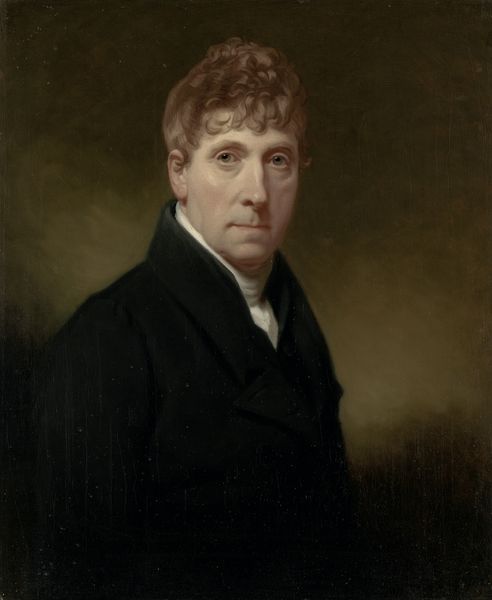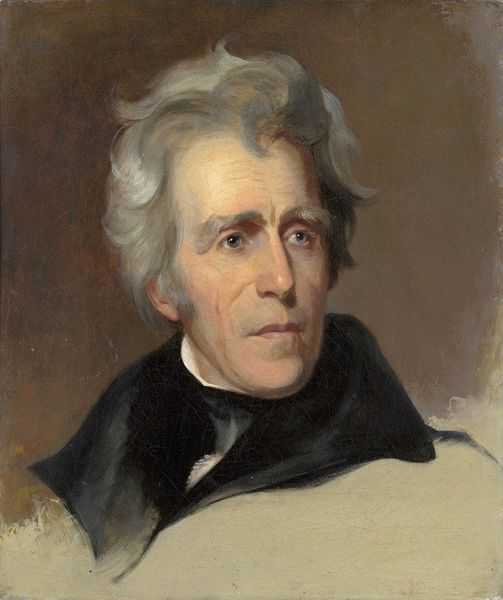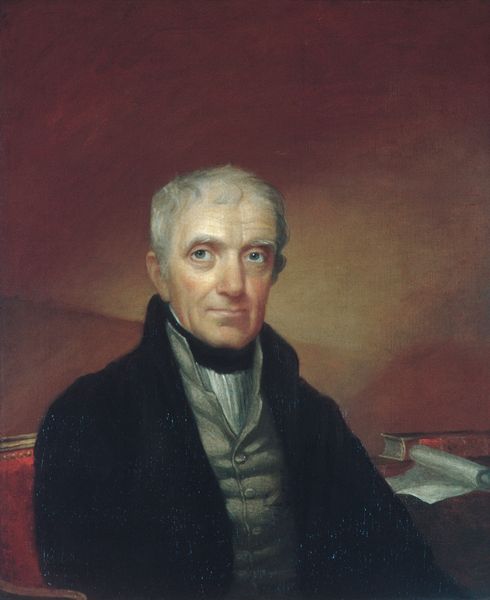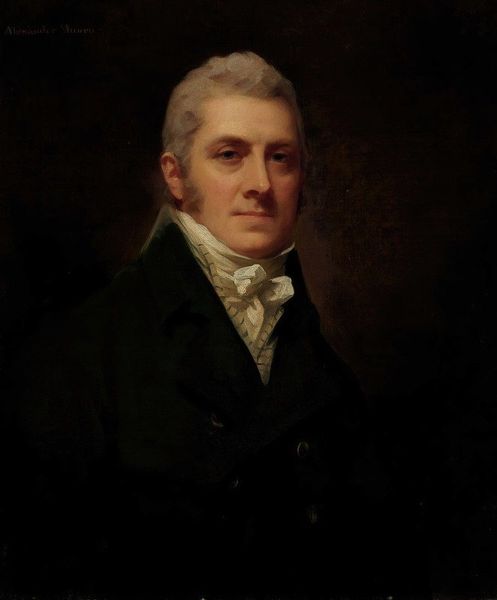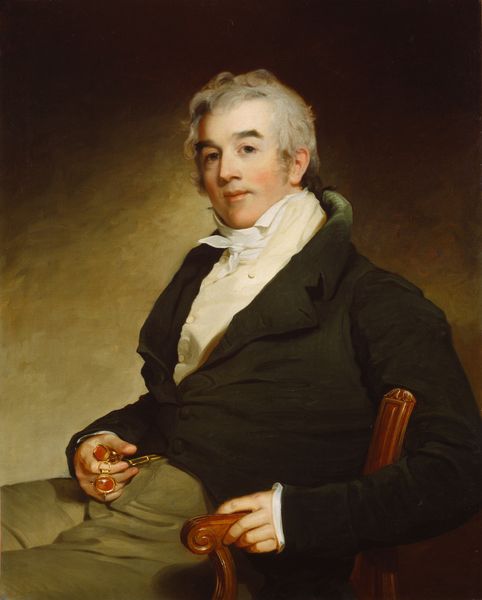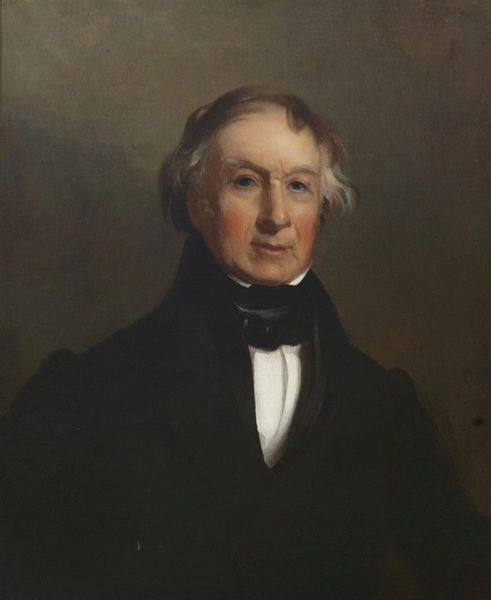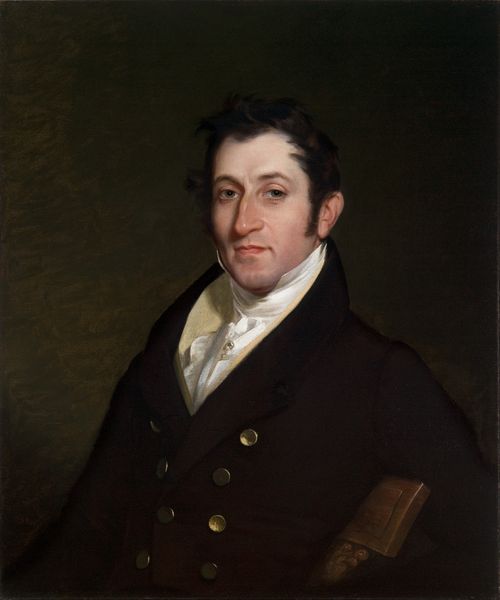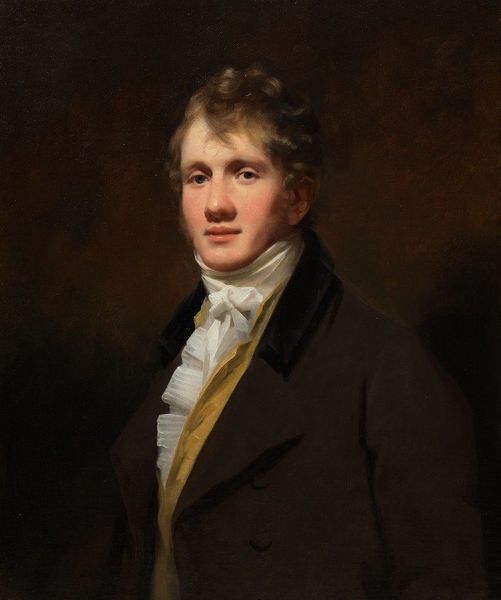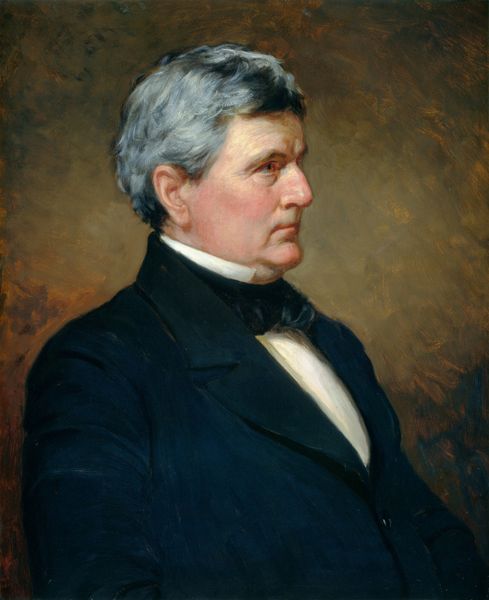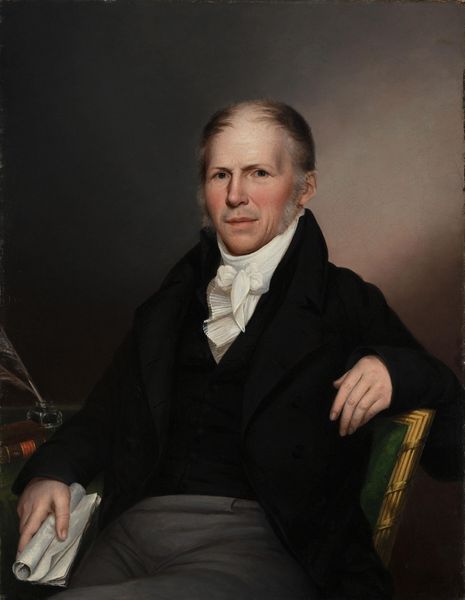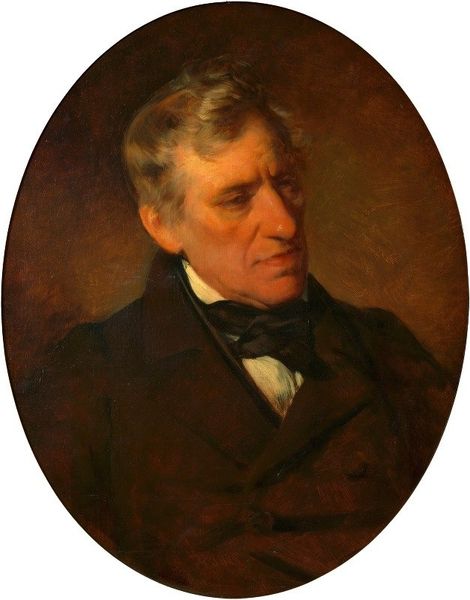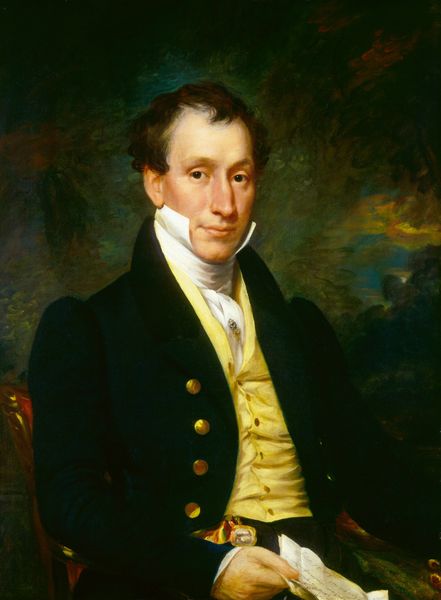
painting, oil-paint
#
portrait
#
neoclacissism
#
painting
#
oil-paint
#
portrait head and shoulder
#
romanticism
#
portrait drawing
#
facial portrait
#
academic-art
#
portrait art
#
fine art portrait
#
realism
#
celebrity portrait
Dimensions: overall: 75.5 x 63.5 cm (29 3/4 x 25 in.) framed: 97.8 x 85.1 x 7.6 cm (38 1/2 x 33 1/2 x 3 in.)
Copyright: National Gallery of Art: CC0 1.0
Editor: This is a portrait of Thomas W. Dyott by John Neagle, created around 1836 using oil paint. The dark tones and rather serious expression give it a somber feeling, almost… austere. What do you make of this piece? Curator: Well, looking at this portrait through a historical lens, it's important to understand who Dyott was and how portraiture functioned in early 19th-century America. Dyott was quite the controversial figure, a businessman who built a utopian community, but ultimately faced accusations of fraud. Knowing that, does the portrait's austerity take on new meaning? Editor: Absolutely. It’s like the artist is hinting at a darker side beneath the surface. The unflinching gaze is almost…accusatory now that you mention the fraud. Curator: Precisely! Now consider the role of museums in shaping our understanding of figures like Dyott. Do we celebrate him as an innovator, or condemn him for his alleged crimes? The choices we make about who and how we present these figures are inherently political. Editor: So, the way we interpret the portrait changes depending on the social and historical context. If Dyott was viewed positively in his time, then the portrait might have been seen as celebrating his success. Curator: Exactly. The reception of an artwork is never fixed; it’s a product of its time, but also our own. The painting's display, its provenance, even the wall label influence the viewer's perception. How fascinating! Editor: It really is. I’m seeing how much art is about not just the artist's intention, but about societal values and power structures. Curator: Indeed. And understanding these dynamics is key to unpacking the full story behind any work of art. Editor: I’ll never look at a portrait the same way again. Thanks!
Comments
No comments
Be the first to comment and join the conversation on the ultimate creative platform.
